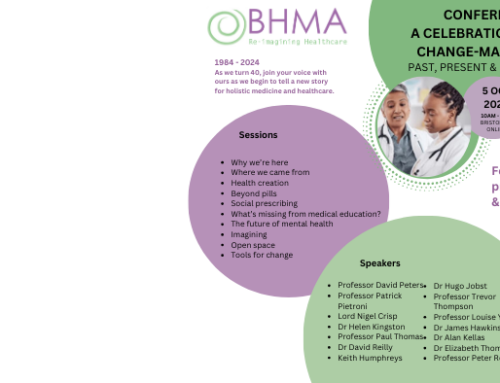Throughout the developed world an over-reliance on a reductionist, dualistic roadmap has driven healthcare systems into a three-headed crisis of cost, care and commitment. Now even the best-resourced systems are struggling to treat ‘lifestyle diseases’ and the long-term multiple problems of an ageing population. And, while levels of poor mental health rise, particularly among the young, under-resourced social care systems are buckling under the strain. None of this is likely to change for the better in the foreseeable future.
When sustaining innovations work, they can make a failing system cheaper, faster, safer, more efficient. But if these temporary fixes only do more of what they have always done, they will only deliver what they have always delivered. This would be fine if, faced as they are with relentless demand, what healthcare systems are doing was actually working. But with austerity savings already robbing staff of the time and the humanity that good care demands, and with professional commitment rapidly flagging, errors piling up and staff burning out, the system’s precarious sustainability may soon hit a tipping point.
Do we need only to pump more money into ‘the system’; to tinker with the way we do medicine, innovating to patch it up even though we know it to be in terminal decline? We might even lever in innovations to shake it up; though such disruptive innovations typically have at best only a short-term impact or get bolted on to mainstream delivery to help it sustain the status quo; or after a short pilot phase get ejected. There was a time for instance when many of us saw in complementary therapies, alternative ways of thinking about illness and the possibility of triggering wellbeing. Though we might still value these approaches, few who work in the NHS any longer view them as vehicles for the sort of system-wide innovation the healthcare crisis urgently demands.
As it bites harder, the notion of having to rethink healthcare, and find ways of triggering wellbeing, are no longer seen as radical. But, as Graham Leicester says in his book (reviewed in this issue, page 51) ‘only transformative innovation can deliver a fundamental shift towards new patterns of viability in tune with our aspirations for the future’. This begs the question of what sort of future we are aspiring to; because the future we imagine will affect how we innovate, and how we innovate will shape the future. And indeed complementary therapies might be signposts to medicine’s future if they signify elements the mainstream lacks. If so it would be a future where society will support healthy ways of life and empower self-care, where care will be as important in healthcare as cure,where medicine will promote resilience, and work with a fuller understanding of the body-mind and of humankind’s ancient relatedness to the other-than-human world.
Ivan Illyich (1975) insisted that medicine must recognise its limits, for in its current form it is no more sustainable than is our industrial-consumer society, predicated as it is on limitless growth. If these entangled worldviews are now running into the buffers of the biosphere’s very real limits, then we must have in mind a much bigger idea about transformation, and a wider vision of the kind of future we want.
It has been said (by William Gibson whose 1984 science fiction novel Neuromancer predicted the internet and virtual reality a decade before the web took off) that:
‘the future is already here – it’s just not evenly distributed’.
Illyich I (1975) Limits to Medicine. New York, NY: Pantheon Books.
By David Peters
Editor-in-chief, The Journal of Holistic Healthcare






